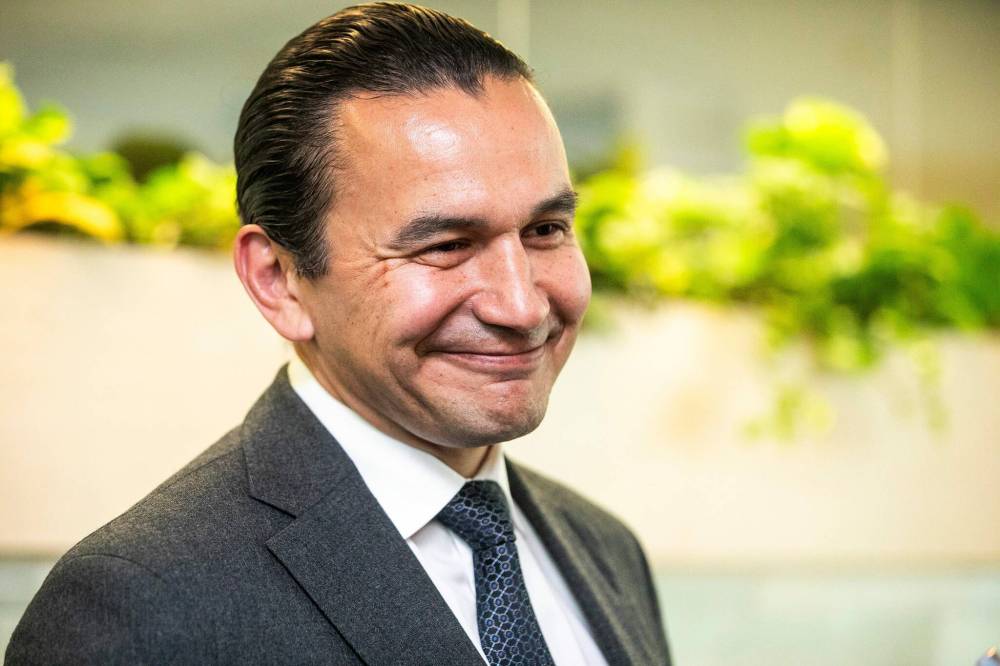American doctors a welcome addition
Advertisement
Read this article for free:
or
Already have an account? Log in here »
To continue reading, please subscribe:
Monthly Digital Subscription
$1 per week for 24 weeks*
- Enjoy unlimited reading on winnipegfreepress.com
- Read the E-Edition, our digital replica newspaper
- Access News Break, our award-winning app
- Play interactive puzzles
*Billed as $4.00 plus GST every four weeks. After 24 weeks, price increases to the regular rate of $19.00 plus GST every four weeks. Offer available to new and qualified returning subscribers only. Cancel any time.
Monthly Digital Subscription
$4.75/week*
- Enjoy unlimited reading on winnipegfreepress.com
- Read the E-Edition, our digital replica newspaper
- Access News Break, our award-winning app
- Play interactive puzzles
*Billed as $19 plus GST every four weeks. Cancel any time.
To continue reading, please subscribe:
Add Free Press access to your Brandon Sun subscription for only an additional
$1 for the first 4 weeks*
*Your next subscription payment will increase by $1.00 and you will be charged $16.99 plus GST for four weeks. After four weeks, your payment will increase to $23.99 plus GST every four weeks.
Read unlimited articles for free today:
or
Already have an account? Log in here »
Manitoba’s NDP government should be applauded for recruiting 33 new physicians from the United States. At the same time, Premier Wab Kinew and all the people in government — from ministers to recruiters working in the Health Care Retention and Recruitment Office — should be urged to double down on existing efforts to help ease the doctor shortage.
Just about every province is suffering a physician shortage and that means just about every province is competing with Manitoba for estranged and disillusioned health-care professionals who may seek an escape from the war on health care and science triggered by U.S. President Donald Trump. Complicating matters is that there is a lot more tire-kicking than actual recruitment going on.
The Medical Council of Canada has reported on a huge increase in the number of U.S. medical school graduates opening an account on physiciansapply.ca, a recruitment portal for international medical graduates (IMGs) who are considering a move to Canada. Just about every province is reporting that those expressions of interest are translating into at least some confirmed recruitments.

Mikaela MacKenzie/Winnipeg Free Press files
Premier Wab Kinew
Nova Scotia has licensed 19 U.S physicians this year, a nearly 75 per cent increase from the year before. Alberta has received about 75 applications for a medical licence, nearly double its normal intake. British Columbia, long a destination for American expats, has done a bit better, with 130 health-care professionals of all designations coming to the province. And Ontario, our largest province, has seen 251 American physicians relocate, the most of any province.
In the context of the recruitment results in other provinces, Manitoba is doing fine. Maybe OK is the right term. But for a province that has lingered near the bottom of the physician-per-capita metric, fine or OK may not be enough.
According to the Canadian Institute for Health Information, Canada has, on a national basis, roughly 240 physicians per 100,000 people. Manitoba typically reports among the lowest or second-lowest total number of physicians at roughly 215 per 100,000. And that’s even with tangible progress over the past five years or so.
Between April 2024 and 2025, Manitoba saw a net gain of 164 physicians, increasing the total number of physicians to nearly 3,500. That would be the largest net gain in nearly a quarter of a century. It’s also promising that three-quarters of medical school graduates elect to do their residency in Manitoba, a key trend in retaining physicians after they have completed all their training.
It should be noted that Manitoba recognizes that the current flow of physicians out of the U.S. is an unprecedented opportunity. This past spring, the province took steps to make the road to a medical licence in Canada more attractive. New regulations approved in the spring allow U.S.-trained physicians who have completed a residency and obtained a medical licence to move effectively into full practice in Manitoba.
These are measures that many other provinces have also introduced to ensure the pathway is as easy and effortless as possible.
It’s all very, very promising. But in the war to recruit and retain physicians, Manitoba’s recruitment of 33 American doctors is still, in relative terms, a very small number.
As political tensions in the U.S. rise, and men and women of science and medicine continue to feel marginalized or even disparaged, more American physicians will be looking for an off-ramp.
It remains to seen if the welcome sign Manitoba is waving on that off-ramp is big enough to ease our chronic physician shortage.

